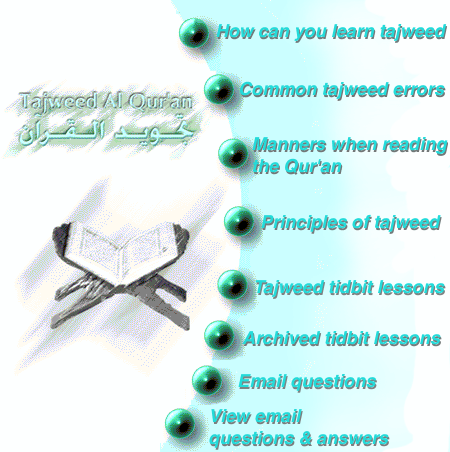|
|

copyright © 2002, abouttajweed.com, all rights reserved |
Question
To
begin with may Allah reward you for your answers to our questions. I
have read about the different ways of reading in your Q&As; is the Qur'an
written in different ways also? Or are the different readings only in
the way it is read and in the written form it is always the same? Answer And
May Allah reward you for your questions that benefit many. At
the advent of Islam, the Arabic writing did not have the dots and vowelization
it now has. This is because there
was no need for it. Those who
could read were able to look at the little “teeth” and know immediately
which letter it was, and know what vowels were to be used. The scribes wrote
down the revelation using this way of writing. An
example of a copy of part of surah An-Naas between the 2nd and 3rd
century is:
You
may notice there are no “dots” over the letters, so the
In
later years, the need for vowelization and diacritics (dot system) became
evident. The diacritics were
different from place to place, but all could read the copy of the Qur’an
once they understood the particular diatric and vowelization system.
This
present day, there are two different diacritic systems for two different ways
of recitation. The Warsh ‘an
Naafi' copy of the Qur’an uses a slightly different system than the copies
of the Qur’an used for the way of Hafs ‘an ‘Aasim.
For example in the copy of the Qur’an used for the way of Warsh, the
Of course the voweling and diacritics for each way of reading,
corresponds to the recitation of that particular way.
|